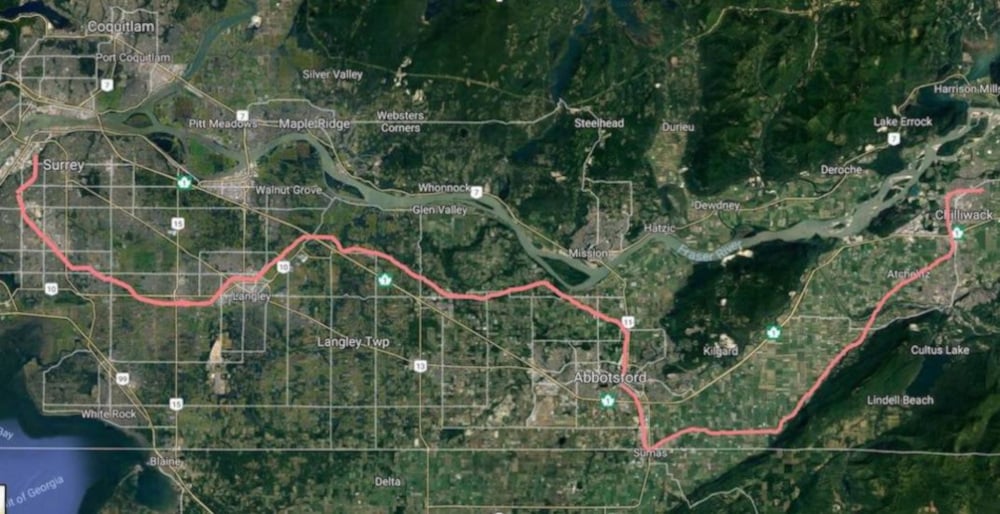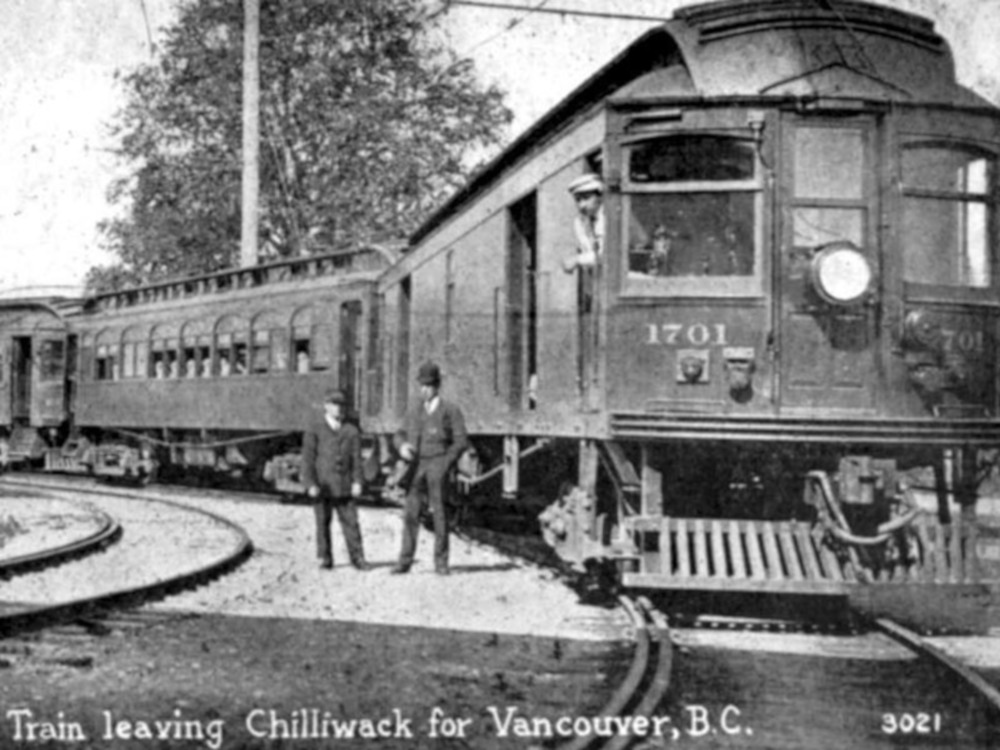A century ago, interurban rail service helped Fraser Valley communities develop — and it could do the same thing today, says a group fighting to resurrect passenger trains running from Surrey to Chilliwack.
Their vision of the future: clean, affordable light rail.
“We’re not talking about a commuter line,” said Rick Green, former mayor of the Township of Langley and a founding member of the group South Fraser Community Rail. “We’re talking about a community line.”
The West Coast Express is a commuter line, shuttling residents from as far as Mission to jobs in Vancouver.
But the new service would provide communities south of the Fraser River, home to about 1.2 million people, with a self-contained transportation system from Surrey to Chilliwack. The group estimates 70 per cent of all trips originating in those communities stay within the region, rather than ending in Vancouver.
Green said the car is king in those communities today.
In the Township of Langley for example, 91 per cent of workers commute in vehicles, according to 2016 census data; the percentage in transit-rich Vancouver is 49 per cent.
There are other familiar local names and advocates of sustainable growth in the south Fraser group, such as former B.C. premier Bill Vander Zalm, Peter Holt, an engineer and former CEO of the Surrey Board of Trade, and Patrick Condon, founding chair of UBC’s urban design program (and occasional Tyee columnist).
They believe that renewed interurban rail service is more ambitious than the planned SkyTrain line between Surrey and Langley, covering more ground.
They want to introduce zero-emission hydrogen trains, inspired by the world’s first which were rolled out in Germany last year.
The interurban rail corridor still exists and is used for freight.
It’s been almost 70 years since the BC Electric Railway ended passenger service, which ran from Vancouver to Chilliwack between 1910 and 1950, making up to four round-trips a day and also carrying freight and mail.

As well as providing transportation, one of the goals of the original railway was to bring electricity to the communities along the line. Electric light and telephones only came to the Fraser Valley as the line spread through settlements, allowing them to grow into town centres and cities.
BC Hydro owns the rail corridor and Canadian Pacific and Southern Railway have contracts to use part of it for freight operations.
BC Hydro communications told The Tyee via email that any new operations on the corridor would require approval from BC Hydro and the railway operators. It would be “open to discussing the future use of the right-of-way for transit purposes should the Province or TransLink decide to pursue this option,” the statement added.
But TransLink called the plan to revive passenger service on the line “insufficient” in a report last month.
The report, prepared by TransLink’s vice-president of planning and policy Geoff Cross, found that the interurban proposal isn’t in sync with regional planning, skipping key destinations such as Surrey Central and Langley City.
“Lots of the transportation we’re talking about in our visioning is based on those centres, and connecting those corridors,” said Mayor Jonathan Coté of New Westminster, who chairs TransLink’s Mayors’ Council.
The rail advocacy group says the interurban line would serve and help develop other centres the SkyTrain would skip, such as Newton and Cloverdale; TransLink argues that the rail passes through a significant amount of agricultural land where population growth is limited. Cloverdale, it notes, is “projected to be one of the slowest growing urban centres in the South of Fraser.”
TransLink reports that interurban rail has “less attractive travel times between key destinations”; the group argues that the service would be better because there would be more stops.
TransLink also notes that freight trains are already using the line. Green has said that the group is in “no way trying to cut off the freight part of our economy,” suggesting a second track for passenger trains could be built alongside the stretch of rail where freights operate.
And costs of the rail line would be far lower than the planned SkyTrain expansion, says Green. The SkyTrain line cost is estimated at $3.5 billion for 27 kilometres, which is about $130 million per kilometre.
“We can’t keep spending money the way we’re doing,” said Green, who’s worried about the possibility of SkyTrain going over budget.
The rail group estimates their interurban proposal will cost $1.2 billion for 99 kilometres, which is about $12.5 million per kilometre.
Despite TransLink’s criticisms of the interurban proposal, it noted it would explore the potential of resurrecting old rail corridors for passenger use as part of its strategy for the next 30 years, called Transport 2050.
“There could be some opportunity here,” said Mayor Coté. “But we’re right in the middle of our 10-year plan, and we’re pretty committed... The Transport 2050 process is the opportunity for these groups to say what are the next big projects, the next big ideas for the region.”
Green called TransLink’s consideration “lip service” and said the conversation about large-scale transit investment in the South Fraser region can’t wait.
“When Highway 1 is clogged, the Fraser Valley is clogged.”
Green and the group are continuing to lobby community groups, municipalities and business associations to win support for the idea. ![]()
Read more: Transportation, Media, Urban Planning + Architecture
















Tyee Commenting Guidelines
Comments that violate guidelines risk being deleted, and violations may result in a temporary or permanent user ban. Maintain the spirit of good conversation to stay in the discussion.
*Please note The Tyee is not a forum for spreading misinformation about COVID-19, denying its existence or minimizing its risk to public health.
Do:
Do not: